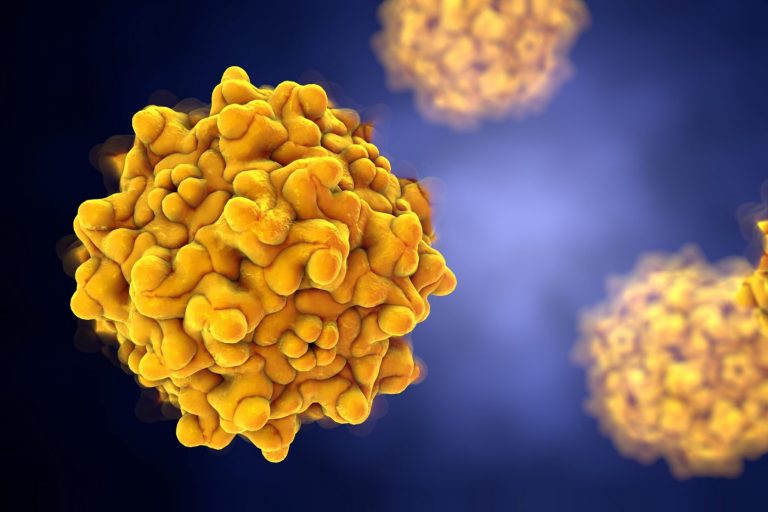
A new study reports that gene therapy can be combined with a novel surgical approach to deliver genes into the inner ear of monkeys, which could provide a promising pathway for translating this research to creating gene therapy to treat human hearing disorders.
Inner ear gene therapy, using adeno-associated viral vectors (AAV), holds promise as a treatment for hearing and balance disorders. In previous studies, researchers were able to successfully target the inner ear and show therapeutic efficacy in mouse models. Specifically, the AAV Anc80L65 has shown benefits in targeting inner and outer hair cells in newborn mice.
Now, a new study published in Nature Communications reports that Anc80L65 can be combined with a transmastoid posterior tympanotomy to deliver genes into the inner ear of rhesus macaques.
Hearing loss affects more than 400 million people worldwide. More than half of all childhood deafness cases are genetic and caused by mutations in over 120 different genes, fueling the need for a gene therapy solution. Vestibular, or balance, disorders can also originate in the inner ear and can be treated with such an approach.
“Hearing disorders affect millions of individuals and impede their ability to communicate, yet hardly any drug treatments are available to mitigate these conditions,” said Luk Vandenberghe, PhD, director of the Grousbeck Gene Therapy Center at Mass Eye and Ear and an associate professor of ophthalmology at Harvard Medical School. “Delivery to the cochlea is one of the greatest challenges. Here, we show the potential of a one-time surgical intervention of a durable gene-based drug platform to eventually change the status quo for patients.”
In an effort to reach the inner ear, the researchers devised a surgical method to delicately gain access to the round window membrane—an opening from the middle ear into the inner ear. Once inside the inner ear, the gene therapy is delivered via a viral vector. This approach was inspired by cochlear implant surgery, which similarly requires access to the inner ear.
Researchers tested how effective two AAV technologies—AAV1, an established vector for use in the cochlea, and the synthetic Anc80L65—were at targeting the inner hair cells, the primary sensors of sound in the ear. Five rhesus macaques were injected with AAV1 or Anc80L65 expressing eGFP.
The surgical and molecular aspects of the delivery to the inner ear were safe and well tolerated. All but one animal showed cochlear eGFP expression 7–14 days following injection. Anc80L65 in two animals transduced up to 90% of inner hair cells; AAV1 was markedly less efficient at equal dose. AAV neutralizing antibodies were detected in serum but not in cerebrospinal fluid following injection in all animals, indicating the gene therapy went to its intended target.
The results reveal that Anc80L65 can be delivered into the inner ear, and consistently transduce cochlear and vestibular cells of young nonhuman primates using an optimized surgical approach that allows visualization of the round window prior to injection of the gene therapy.
“Hearing loss is the most common sensory deficit across the globe, and at least half of congenital hearing loss is attributable to genetic causes. Thus, the potential of gene therapy is transformative,” said Konstantina Stankoovic, MD, PhD, professor and chair of the department of otolaryngology–head and neck surgery at Stanford University School of Medicine. “This research demonstrates the feasibility of using a genetic and surgical approach to target specific cells in the inner ear of nonhuman primates. If translated into successful therapies for humans, the impact will be enormous, similar to the way in which gene therapy has ameliorated other disorders such as blindness.”
Studies that utilize this surgical approach and AAV to test gene therapies are ongoing for some of the specific genes leading to hearing loss in animal models, with the hopes of one day translating this research into treatments for humans. The technology is being studied to not only add genes but knock out genes that are toxic to hair cells.
The company Akouos—co-founded by Mass Eye and Ear researchers—plans to build upon this work in its ongoing and future experiments. “This research paves the way for translating this approach into humans and was a very necessary step that had to be tested and worked out, said Michael McKenna, MD, co-founder and chief medical officer at Akouos. “We now use this approach routinely in experiments that test new treatments for inner-ear disorders, like hearing loss, and hope to test this approach in clinical trials in the future.”













